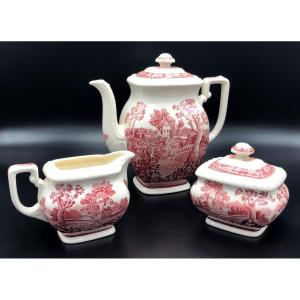KPM (Königliche Porzellan Manufaktur or 'Royal Porcelain Factory') is Berlin’s oldest porcelain factory and Germany’s second oldest. Founded in 1763, it continues producing porcelain to this day. King Frederick II, also known as Frederick the Great, was deeply involved in the company’s development and became its owner. He invested heavily in the factory and gave it its iconic emblem, his royal scepter.
In the 18th and 19th centuries, KPM specialized in porcelain dinner services, figurines, painted plaques, and vases. The company was particularly associated with the mid-18th-century Rococo style and later the austere Neoclassicism of the early 19th century. Antique KPM porcelain from these periods is highly sought after and collected today.
Throughout the 18th and 19th centuries, KPM was one of Europe's most successful ceramics manufacturers, enjoying financial backing from the Prussian crown and, later, the unified German state. Thanks to its close ties with the state, KPM, along with Meissen, became synonymous with German porcelain, much like Sèvres in France, Royal Worcester in England, and Royal Vienna in Austria. KPM played a fundamental role in the landscape of 19th-century European decorative arts and was one of the most prolific producers of luxury porcelain.
Dimensions: Height 12.3 cm, Width 11 cm, Top Diameter 9 cm, Weight 285 grams.
Condition: Some gilding has rubbed off in places, and the three ball feet on which the cup originally stood are missing. There is also a very fine hairline crack inside the cup.
Please study the accompanying photographs carefully, as they form an integral part of this description. The item will be shipped with full tracking and insurance. Please note that shipping costs include labor, packaging, and postage.






























 Le Magazine de PROANTIC
Le Magazine de PROANTIC TRÉSORS Magazine
TRÉSORS Magazine Rivista Artiquariato
Rivista Artiquariato
